Abstract
1. Isolated preparations of bronchial strip and of intact iris from the guineapig have been adapted for the measurement of affinity constants of substances which block post-ganglionic acetylcholine receptors.
2. The affinity constants of 28 compounds on bronchial muscle and of 8 compounds on the iris have been compared with values measured on the guinea-pig ileum.
3. Although the compounds differed up to a million-fold in affinity, most of the estimates of log affinity constant for the bronchial muscle and iris differed only slightly from those on the ileum.
4. Some of the differences could be attributed to the actions of hexamethonium, used in the tests on the ileum but not, initially, in the tests with the bronchial strip and iris. Hexamethonium reduced most of the estimates of log K for the receptors in the bronchial strip by a variable but significant amount, which could be due, at least in part, to a weak post-ganglionic blocking (atropine-like) action. On average, hexamethonium had little effect on the estimates made with the ileum, appreciably decreasing estimates with some compounds and increasing those with others.
5. The results indicate that, although there may be differences between the acetylcholine receptors in the three types of tissue, there is no conclusive evidence, because the differences in affinity which we have observed could have arisen from differences in the experimental conditions. This is illustrated by results obtained with the guinea-pig ileum recorded with the same technique as was used for the bronchial strip, which are presented as an appendix.
6. Such differences as may exist between these three types of acetylcholine receptor are likely to be limited to the replacement of one aminoacid in the receptor protein by a homologue.
Full text
PDF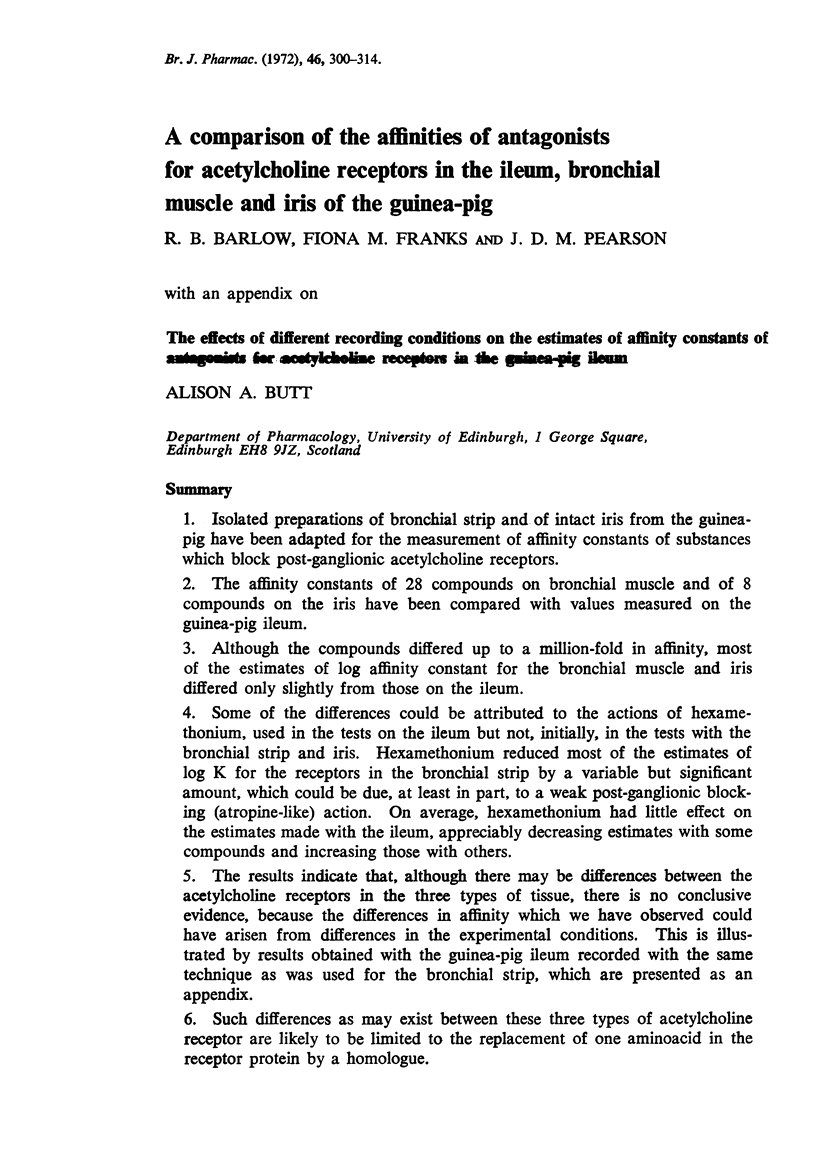
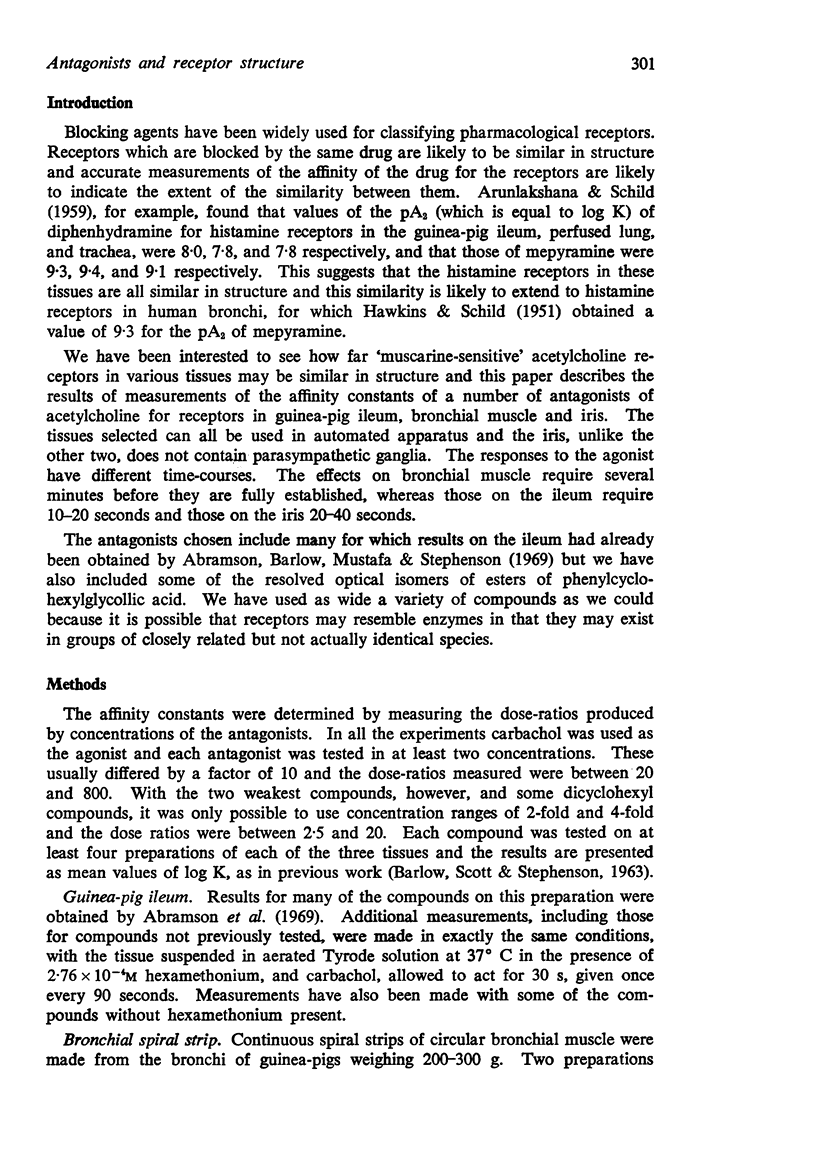
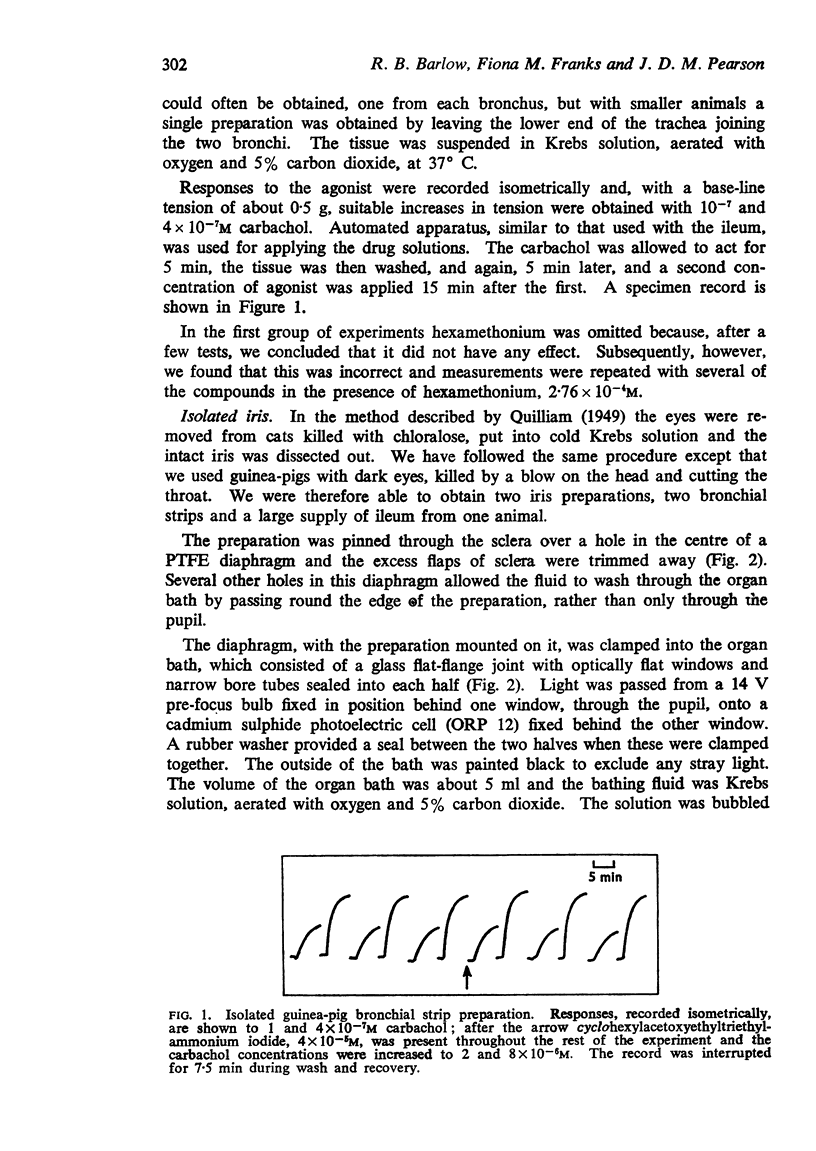
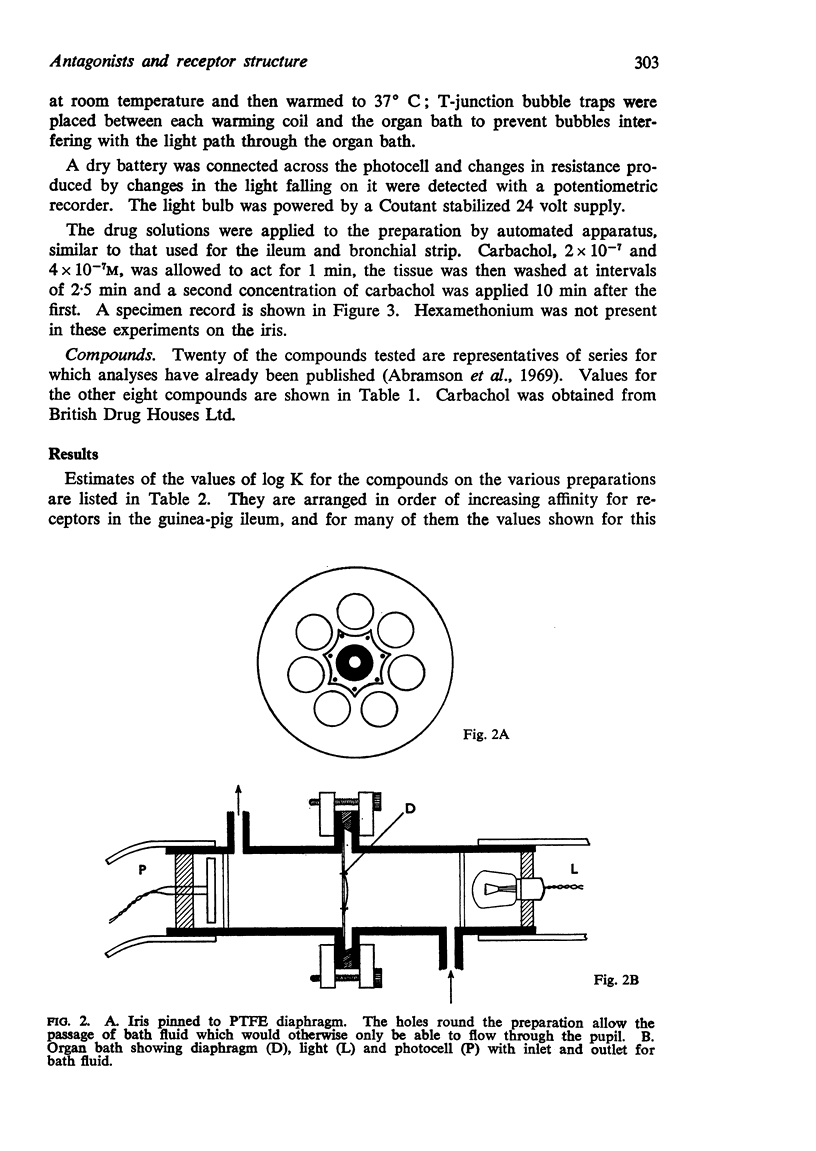
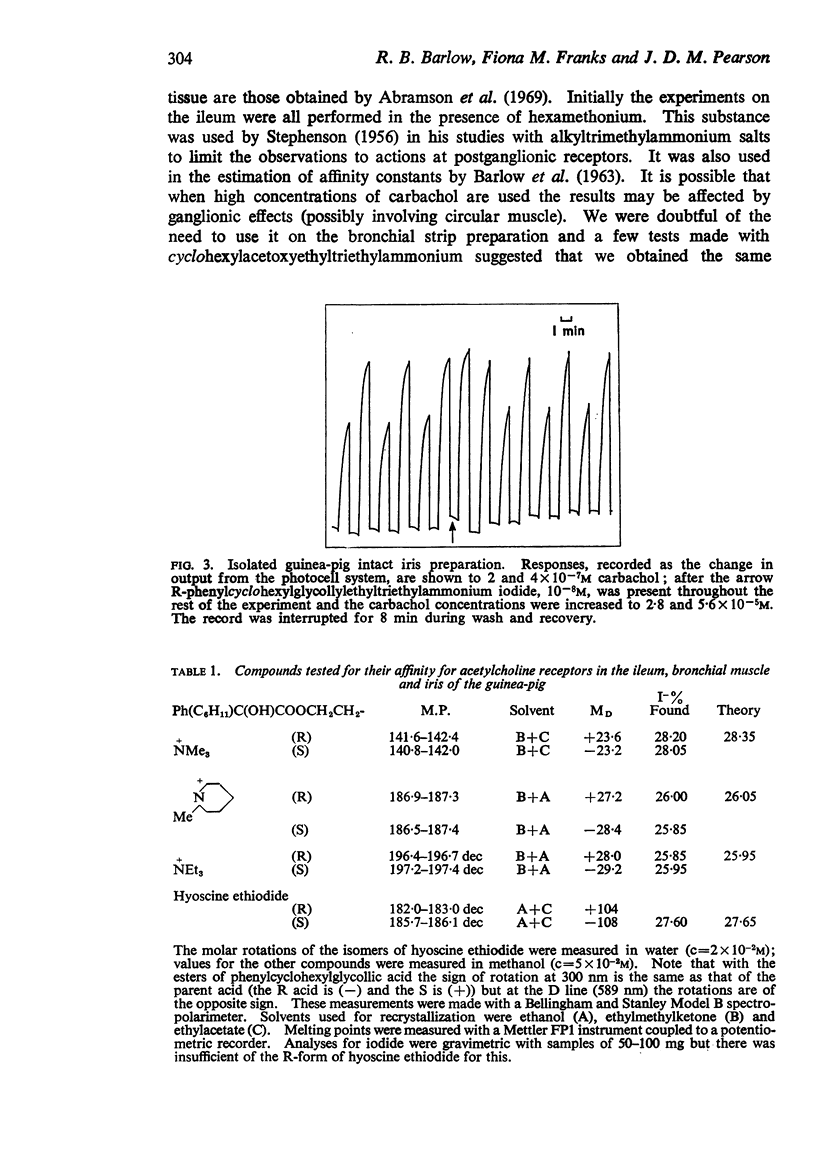
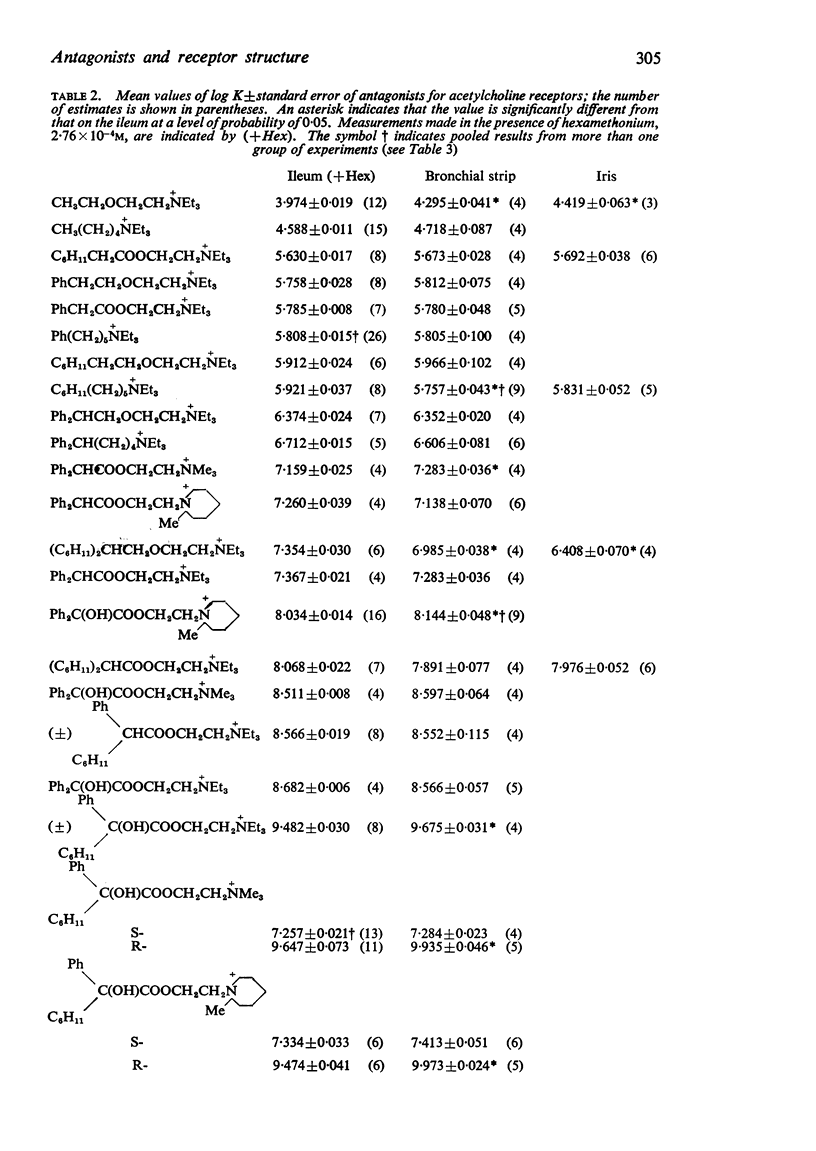

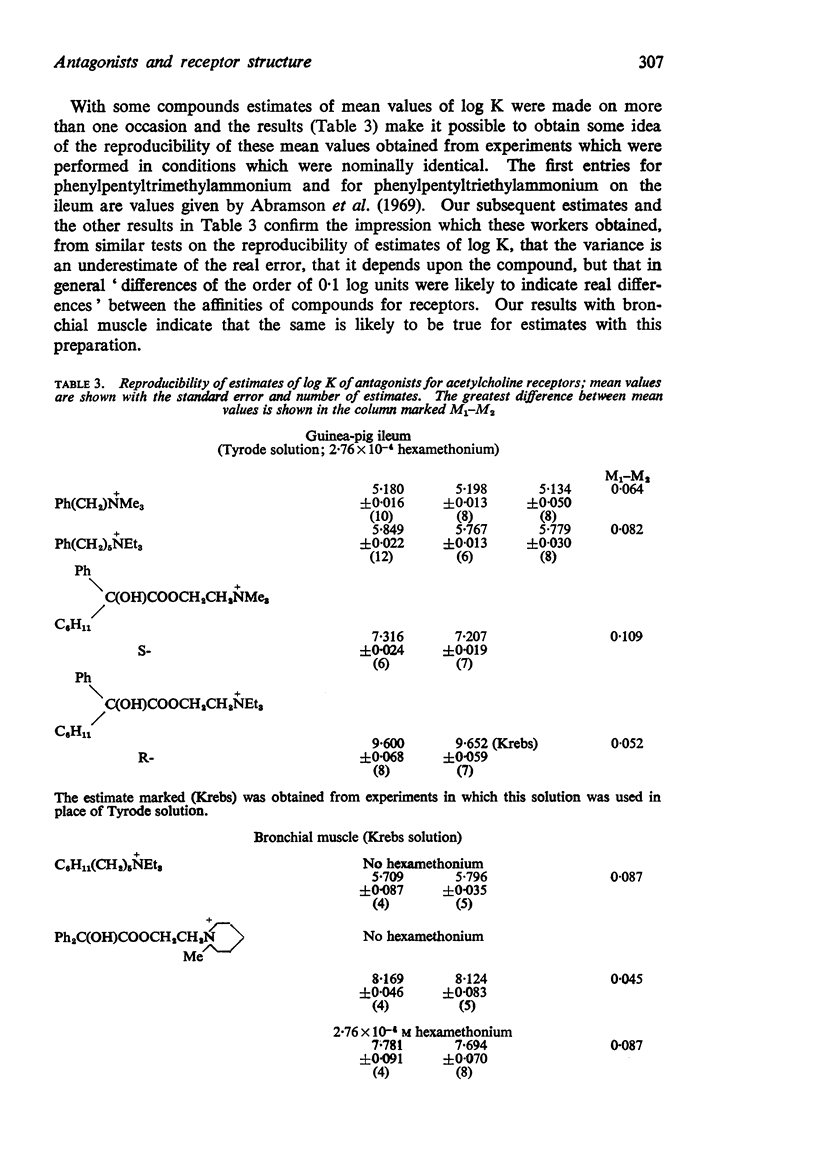
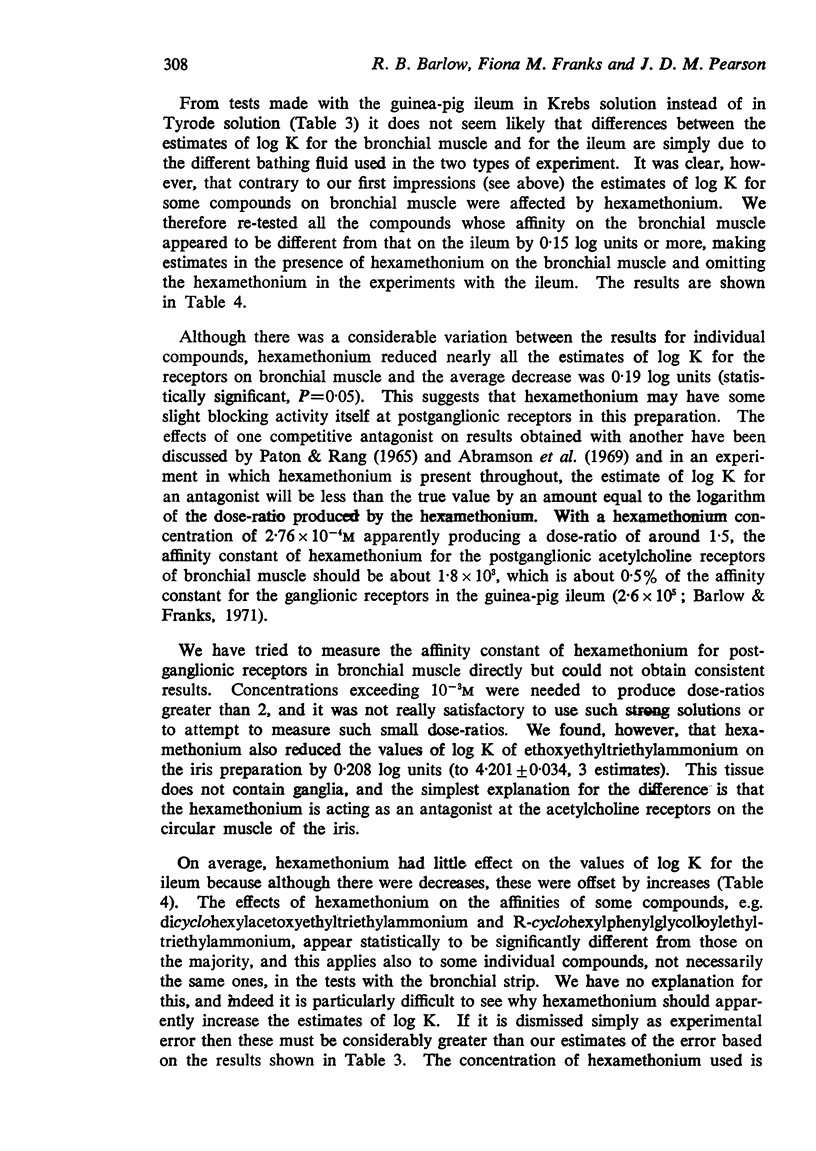
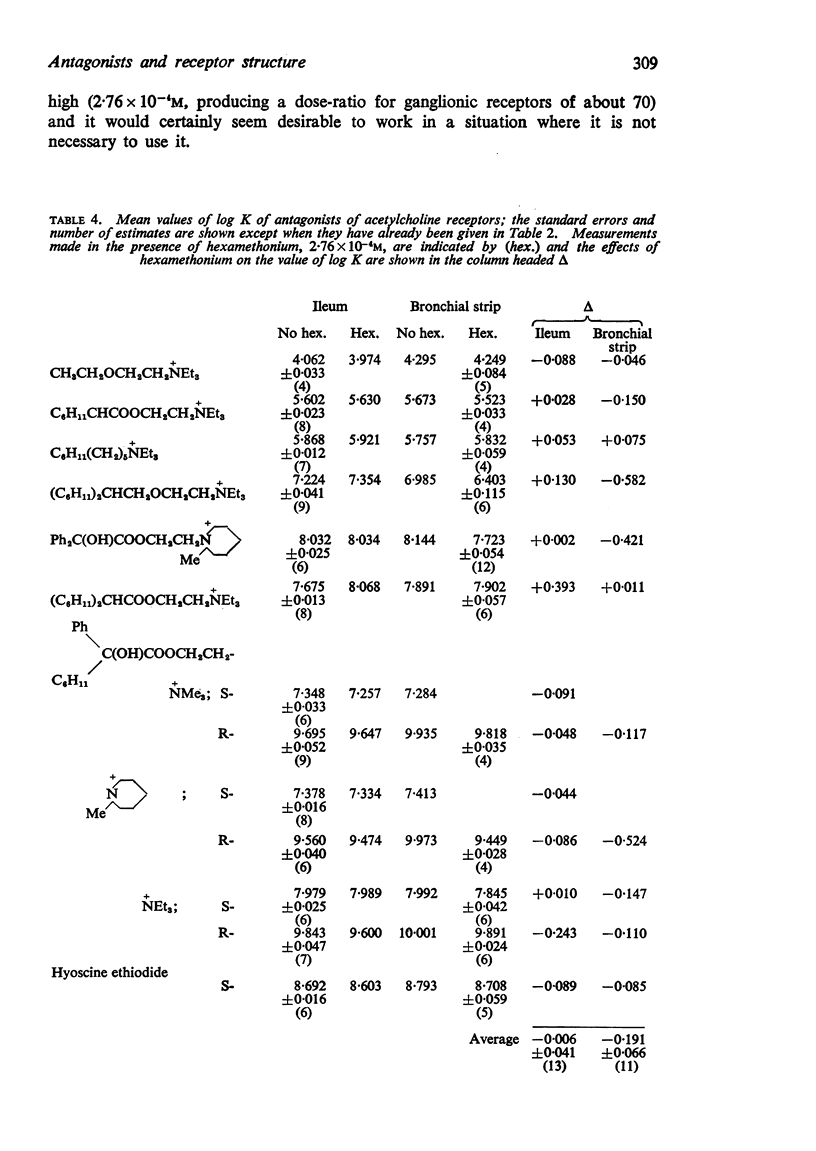
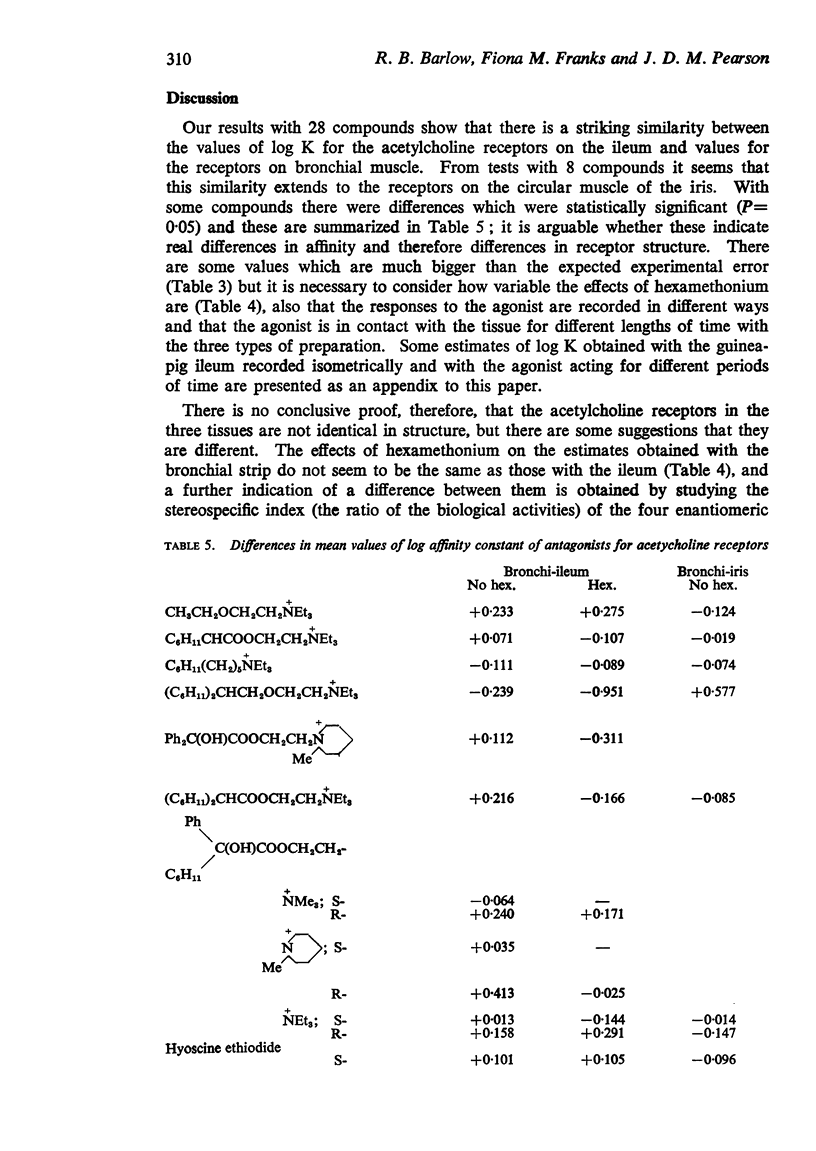

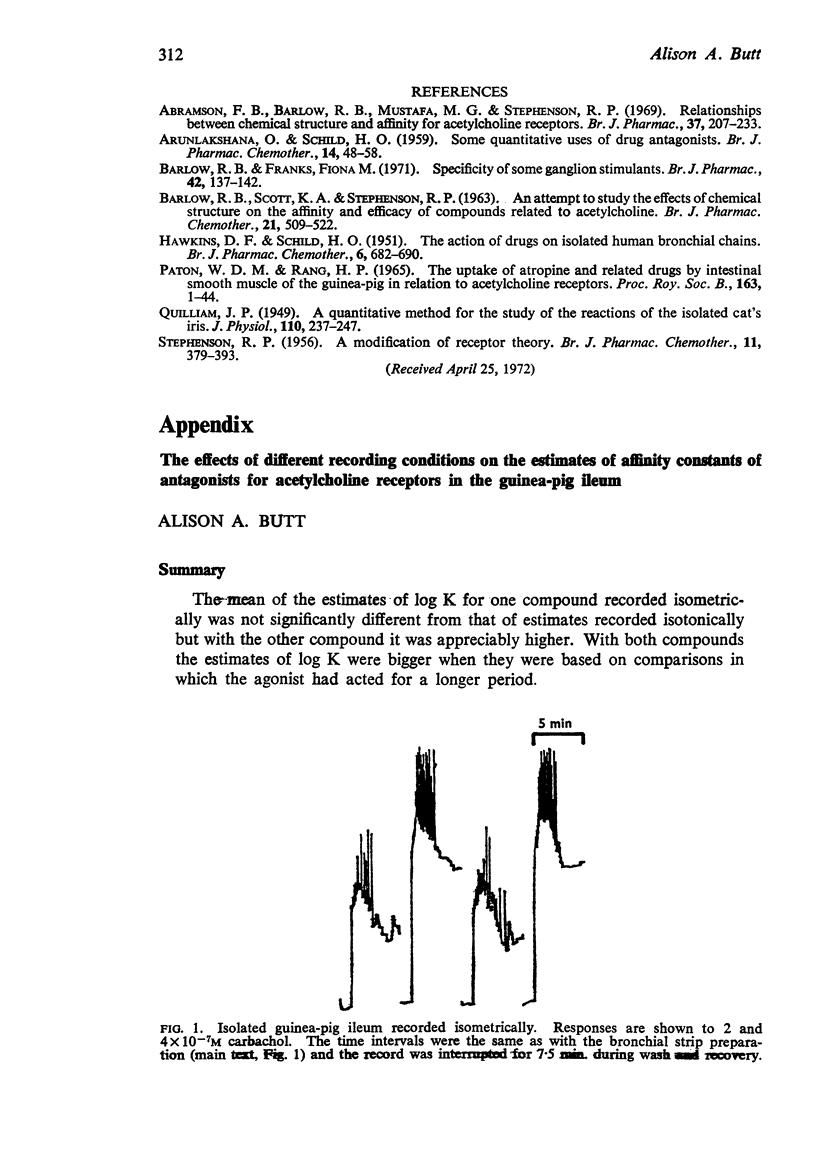
Selected References
These references are in PubMed. This may not be the complete list of references from this article.
- ARUNLAKSHANA O., SCHILD H. O. Some quantitative uses of drug antagonists. Br J Pharmacol Chemother. 1959 Mar;14(1):48–58. doi: 10.1111/j.1476-5381.1959.tb00928.x. [DOI] [PMC free article] [PubMed] [Google Scholar]
- Abramson F. B., Barlow R. B., Mustafa M. G., Stephenson R. P. Relationships between chemical structure and affinity for acetylcholine receptors. Br J Pharmacol. 1969 Sep;37(1):207–233. doi: 10.1111/j.1476-5381.1969.tb09539.x. [DOI] [PMC free article] [PubMed] [Google Scholar]
- BARLOW R. B., SCOTT K. A., STEPHENSON R. P. AN ATTEMPT TO STUDY THE EFFECTS OF CHEMICAL STRUCTURE ON THE AFFINITY AND EFFICACY OF COMPOUNDS RELATED TO ACETYLCHOLINE. Br J Pharmacol Chemother. 1963 Dec;21:509–522. doi: 10.1111/j.1476-5381.1963.tb02019.x. [DOI] [PMC free article] [PubMed] [Google Scholar]
- Barlow R. B., Franks F. Specificity of some ganglion stimulants. Br J Pharmacol. 1971 May;42(1):137–142. doi: 10.1111/j.1476-5381.1971.tb07093.x. [DOI] [PMC free article] [PubMed] [Google Scholar]
- GUILLIAM J. P. A quantitative method for the study of the reactions of the isolated cat's iris. J Physiol. 1949 Dec 15;110(1-2):237–247. doi: 10.1113/jphysiol.1949.sp004436. [DOI] [PMC free article] [PubMed] [Google Scholar]
- HAWKINS D. F., SCHILD H. O. The action of drugs on isolated human bronchial chains. Br J Pharmacol Chemother. 1951 Dec;6(4):682–690. doi: 10.1111/j.1476-5381.1951.tb00680.x. [DOI] [PMC free article] [PubMed] [Google Scholar]
- PATON W. D., RANG H. P. THE UPTAKE OF ATROPINE AND RELATED DRUGS BY INTESTINAL SMOOTH MUSCLE OF THE GUINEA-PIG IN RELATION TO ACETYLCHOLINE RECEPTORS. Proc R Soc Lond B Biol Sci. 1965 Aug 24;163:1–44. doi: 10.1098/rspb.1965.0058. [DOI] [PubMed] [Google Scholar]
- STEPHENSON R. P. A modification of receptor theory. Br J Pharmacol Chemother. 1956 Dec;11(4):379–393. doi: 10.1111/j.1476-5381.1956.tb00006.x. [DOI] [PMC free article] [PubMed] [Google Scholar]


